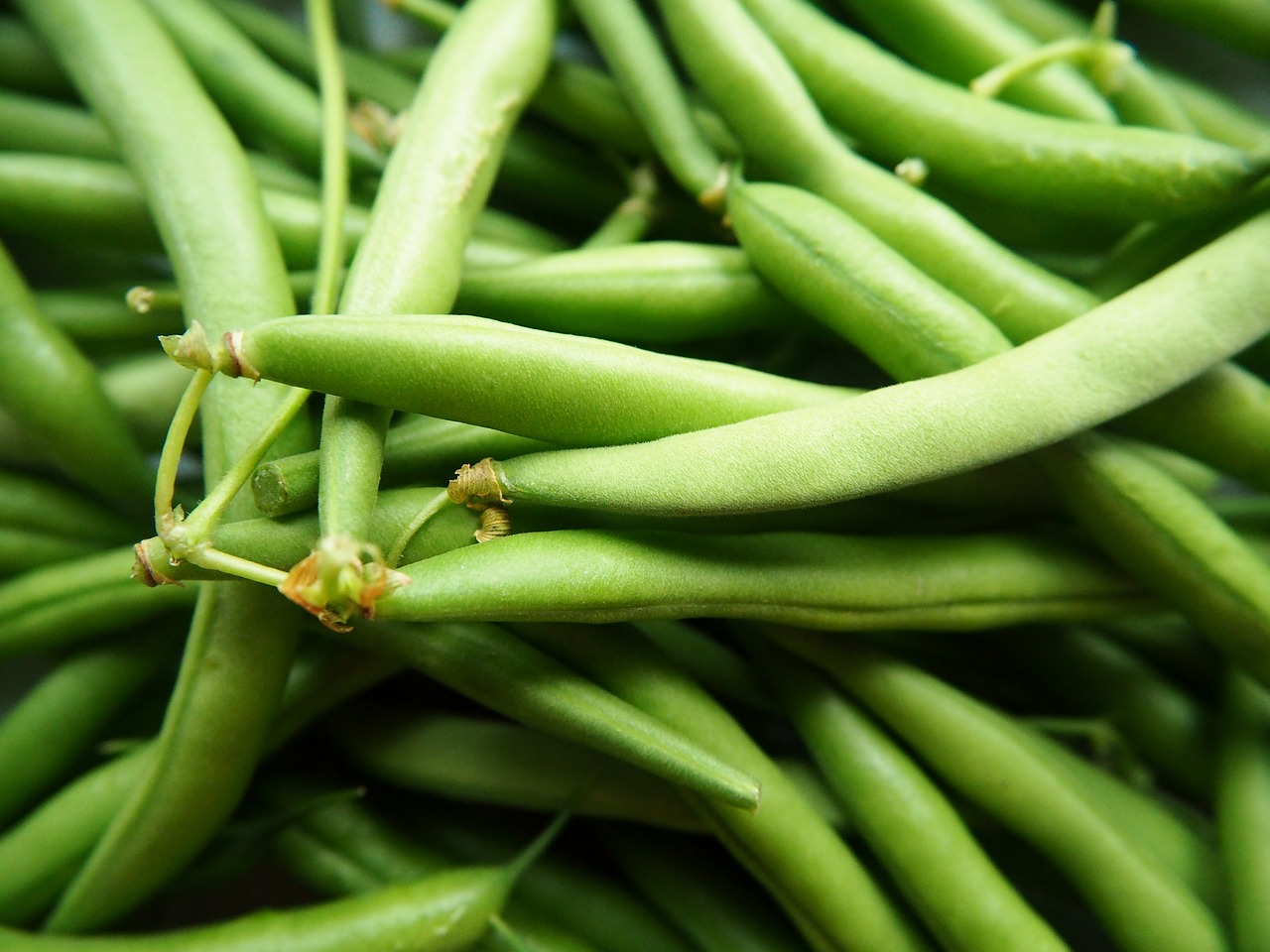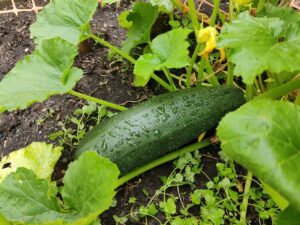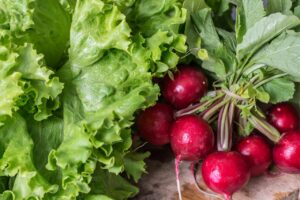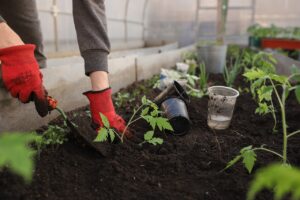Growing Beans: From Seed to Harvest
In this comprehensive guide, we will explore the essentials of how to grow beans, covering bean plant care, harvesting beans, and bean companion plants. Beans are a versatile and nutritious crop that can be easily cultivated in various climates and garden spaces, making them an ideal choice for both novice and experienced gardeners. Whether you’re interested in bush or pole beans, this guide will provide you with the information you need to ensure a successful and bountiful harvest.
Bean Varieties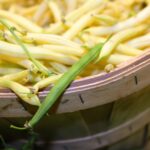
Bush Beans
- Golden Wax Bush Bean: This compact, bushy bean plant yields yellow, wax-like pods, measuring 4-5 inches long. Reaching 12-18 inches in height, these beans boast a mild, buttery flavour and tender texture, making them suitable for steaming, sautéing, or stir-frying. Plant in well-drained soil and full sun during spring or summer, and water regularly for optimal growth. Harvest time: 50-60 days.
- Tendergreen Bush Bean: A compact, bush variety producing slender, round pods measuring 5-6 inches long, with plants reaching 18-24 inches in height. These tender, sweet, and flavorful beans are ideal for steaming, boiling, or stir-frying. Plant in well-drained soil and full sun during spring or summer, watering regularly for consistent growth. Tendergreen beans, favoured by home gardeners and commercial growers alike, offer a bountiful harvest. Harvest time: 50-60 days.
Pole Beans
- Blue Lake Pole Beans: A pole variety producing 6-7 inch long, straight, round pods requiring support like stakes or trellises, with plants reaching 8-10 feet in height. These tender, sweet, and flavorful beans are suitable for steaming, stir-frying, or roasting. Plant in well-drained soil and full sun during spring or summer, and water regularly for consistent growth. Popular among home gardeners and commercial growers, Blue Lake pole beans have a high yield and delicious flavour. Harvest time: 50-60 days.
How to Grow Beans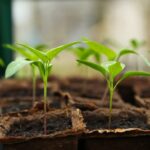
Beans are a popular and versatile crop to grow in your garden. They are not only nutritious and delicious, but also easy to cultivate. In this guide, we will explore the steps on how to grow beans successfully, covering important factors such as seed selection, planting time, soil preparation, and maintenance.
-
Choose the Right Bean Variety
The first step in learning how to grow beans is selecting the appropriate variety for your garden. Beans come in two main types: bush beans and pole beans. Bush beans are compact and don’t require support, while pole beans grow as vines and need a trellis or other structure to climb. Consider factors such as your garden space, desired harvest time, and personal taste when choosing the right variety.
-
Determine the Optimal Planting Time
Beans are a warm-season crop, meaning they thrive in temperatures between 60-85°F (15-30°C). To ensure a successful growth, plant your beans after the last frost in your area when soil temperatures are consistently above 60°F (15°C).
-
Prepare the Soil
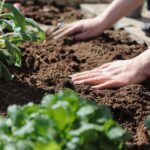
When it comes to how to grow beans, soil preparation is key. Beans prefer well-drained, loamy soil with a pH level of 6.0-6.5. Enrich the soil with organic matter, such as compost or aged manure, to improve nutrient availability and soil structure. This will create an ideal environment for bean plants to grow.
-
Plant the Seeds
Plant bean seeds about 1-1.5 inches (2.5-4 cm) deep and space them 3-4 inches (7.5-10 cm) apart for bush beans or 6-10 inches (15-25 cm) apart for pole beans. If you’re growing pole beans, set up a trellis or other support structure before planting to avoid disturbing the roots later on.
-
Water Consistently
To ensure a successful bean growth, it’s important to maintain consistent moisture levels in the soil. Water your beans regularly, providing about 1 inch (2.5 cm) of water per week. Be careful not to overwater, as this can lead to root rot and other diseases.
-
Fertilize Sparingly
Beans are natural nitrogen fixers, meaning they can obtain nitrogen from the atmosphere and convert it into a form that plants can use. This makes them relatively low-maintenance when it comes to fertilization. However, if your soil is lacking in nutrients, you may want to apply a balanced, slow-release fertilizer at planting time.
-
Pests and Diseases
As you learn how to grow beans, it’s crucial to monitor your plants for signs of pests and diseases. Common bean pests include aphids, bean beetles, and spider mites. Diseases such as bean rust, powdery mildew, and root rot can also affect your plants. Regularly inspect your bean plants and take action if you notice any problems.
-
Harvesting Beans
When your beans are ready for harvest depends on the variety and your intended use. Generally, you can harvest snap beans when they are young and tender, around 50-60 days after planting. Dry beans can be harvested when the pods have turned brown and the seeds inside are hard, typically 70-90 days after planting.
In conclusion, understanding how to grow beans is a rewarding skill that can lead to a bountiful harvest. By following these steps and carefully tending to your plants, you’ll be enjoying fresh, homegrown beans in no time.
Bush Bean Spacing & Pole Bean Spacing
Once you have prepared your soil and the frost has passed, you can plant your beans. All types of beans can be spaced the same distance apart.
- Bush Beans: Space 3 inches apart and in rows 18-24 inches apart.
- Pole Beans: Requires a trellis to grow vertically. Space 3 inches apart and in rows 18-24 inches apart.
Trellis for Pole Beans
It is essential to have suitable structures in place for your beans to climb if needed. Overhead runners or trellises are the best and easiest structures to erect and should be ready before sowing so that your plants have something to train on as soon as they are ready. Once your beans are planted, water them thoroughly and keep an eye on them to ensure that they do not dry out. Once they have germinated and show leaves, water them regularly when needed.
Bean Companion Plants
Companion planting is a gardening technique that involves planting different species of plants near each other to create a mutually beneficial relationship. When done correctly, companion planting can improve soil quality, increase plant growth, and reduce the need for synthetic fertilizers and pesticides. In this article, we will discuss companion planting for beans, a popular and nutritious vegetable that can benefit from the presence of certain plant species.
Herbs
- Basil: Is known for repelling harmful insects such as aphids, whiteflies, and spider mites. By planting basil near your bean plants, you can help protect them from these pests. Additionally, basil is a good source of essential oils and minerals, benefiting the soil and nearby plants.
- Dill: Dill attracts beneficial insects such as lacewings, ladybugs, and hoverflies, which feed on harmful pests. Additionally, dill is known to improve the flavour of beans when planted nearby. Plant dill near your bean plants to attract beneficial insects and enhance flavour.
Flowers
- Chamomile: Known for improving soil quality by increasing the amount of potassium, calcium, and sulphur in the soil. Additionally, chamomile attracts beneficial insects such as hoverflies and parasitic wasps, which feed on harmful pests. Plant chamomile near your bean plants to improve soil quality and attract helpful insects.
- Nasturtiums: Beautiful flowering plants that make great companions for beans. They are known for repelling aphids, whiteflies, and squash bugs, which can damage bean plants. Nasturtiums also attract predatory insects, such as ladybugs and hoverflies, which feed on harmful pests. Plant nasturtiums around your bean plants to help protect them from pests and attract beneficial insects.
- Marigolds: are known for repelling harmful insects and nematodes, which can damage bean plants. Additionally, marigolds have been shown to improve soil quality by releasing chemicals that inhibit the growth of harmful bacteria and fungi. Planting marigolds around the perimeter of your bean garden can help protect your beans and improve soil health.
- Sunflowers: Tall and beautiful flowering plants that make great companions for beans. They provide shade and support for climbing beans, while their large flowers attract beneficial insects such as bees, ladybugs, and hoverflies. Additionally, sunflowers are heavy feeders, which means they take up nutrients from the soil that are not used by beans. Plant sunflowers near your bean plants to provide support and attract beneficial insects.
Vegetables
- Corn: One of the most beneficial companion plants for beans. Corn and beans have been grown together for centuries by Native Americans, and for a good reason. Corn provides a natural trellis for beans to climb while the beans fix nitrogen in the soil, which benefits the corn. This symbiotic relationship is known as the Three Sisters method of companion planting, and it has been shown to increase crop yields and soil fertility.
- Peas and Clover: Like beans, peas and clover are nitrogen-fixing plants, which means they take nitrogen from the air and convert it into a form other plants can use. By planting peas or clover near your beans, you can improve soil quality and reduce the need for synthetic fertilizers.
- Cucumbers: A member of the cucurbit family, which includes other plants such as squash and melons. These plants have similar nutrient requirements and can benefit from companion planting. Cucumbers can help shade bean plants, which can be beneficial during hot weather. Additionally, cucumbers attract beneficial insects such as bees, which can help pollinate your bean plants.
- Radishes: Improve soil quality by breaking up compacted soil and increasing nutrient availability. This can benefit nearby bean plants by improving soil drainage and nutrient uptake. Additionally, radishes are fast-growing plants that can be planted and harvested quickly, making them a good choice for intercropping with beans.
- Celery: A great companion plant for beans because it attracts beneficial insects such as lacewings and parasitic wasps, which prey on harmful pests. Additionally, celery is a heavy feeder, which means it takes up nutrients from the soil not used by beans. Plant celery near your bean plants to improve soil quality and attract beneficial insects.
Related Articles:
- How to Grow Clover: From Seed to a Thriving Lawn.
- How to Grow Cucumbers: A Comprehensive Guide.
- How to Grow Radishes: A Comprehensive Guide.
Plants to Avoid
On the other hand, some plants should be avoided when planting beans. Here is a list:
- Onions and garlic: Onions and garlic are members of the allium family, which can inhibit the growth of beans and other legumes. They release a chemical called allelopathy, which can reduce the germination and growth of bean seeds. Additionally, onions and garlic can attract pests such as onion maggots and thrips, damaging your bean plants.
- Fennel: Fennel is a tall, feathery herb that can grow up to six feet tall. It can shade out smaller plants like beans and compete for water and nutrients. Additionally, fennel attracts pests such as aphids and spider mites, which can harm your bean plants.
- Pole beans: While bush and pole beans are bean plants, it’s best to avoid planting them together. Pole beans can climb up and overtake bush beans, shading them out and reducing their yield. Planting bush and pole beans in separate areas of your garden is best.
- Nightshade plants: Nightshade plants such as tomatoes, peppers, and eggplants are members of the Solanaceae family. They can attract pests such as Colorado potato beetles and flea beetles, which can damage your bean plants. Additionally, nightshade plants have similar nutrient requirements as beans and can compete for soil nutrients.
- Brassicas: Brassicas such as broccoli, cabbage, and cauliflower can attract pests such as cabbage worms and aphids, damaging your bean plants. Additionally, brassicas have a high demand for soil nutrients and can compete with beans for nutrients in the soil.
Conclusion
Mastering how to grow beans is a rewarding skill that can lead to a bountiful harvest. By following the steps outlined in this guide and carefully tending to bean plant care, you’ll be enjoying fresh, homegrown beans in no time. As you become more experienced with harvesting beans and understanding the benefits of bean companion plants, you’ll be well on your way to creating a thriving and sustainable garden. Whether you’re growing bush or pole beans, these versatile and nutritious crops are sure to become a staple in your garden and your kitchen.

